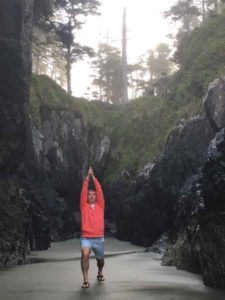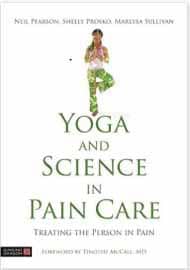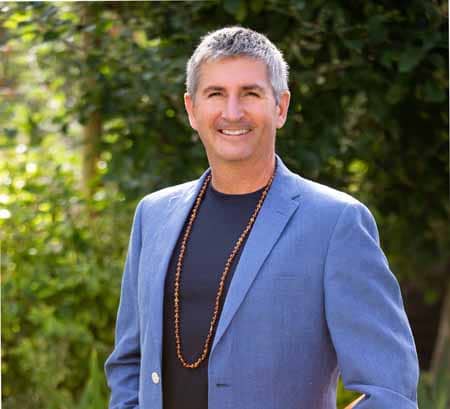Pain Care Yoga began as a dream. I wanted to step outside the traditional medical setting, to bring my knowledge and experience as a physical therapist to people living in pain through yoga and contemplative practices. Even with lengthy and intensive training in yoga and yoga therapy, I did not feel ready. I wondered why people in pain would decide to spend their money and time learning from me. Mugs McConnell and Dariel Vogel, the lead trainers for SOYA were the tipping point. I am certain if you are reading this that you will understand how they encouraged me, making it clear that there was no reason to wait.
There is no shortage of people with chronic/persisting pain who will benefit from yoga. Most studies find as much as 20% of the population report constant pain of moderate to severe intensity, creating significant emotional distress and functional disability for longer than three months. Yet access to good care for people in pain is limited. Enormous gaps in the education of health professionals, yoga teachers and even yoga therapists translate into poor outcomes for those who seek answers outside comprehensive integrated pain management settings. Yoga, as with any approach is not the best path for everyone, yet level 1 research evidence provides enough support that it is now seriously considered as an option for treatment of people with chronic low back pain. Our students and clients would clearly benefit from knowledge and expertise integrating western pain care and yoga.
In 2008, at Salt Spring Centre of Yoga, the precursor of Pain Care Yoga began. At that time, I excluded health professionals and yoga teachers unless they were coming to learn and explore about their own personal pain experiences. Our focus was on self-gaining knowledge, practising awareness and self-regulation, and trying out new ways to approach movement, life and pain. Participants learned about pain biology, physiology, neuroplasticity and bioplasticity prior to and during yoga practices. This new conceptualization of pain and pain care is also supported by level 1 evidence. It provided the cognitive foundation for how greater ease of movement, enhanced quality of life and better pain control were possible, even if pain did not fully resolve. Imagine someone you trust providing you with knowledge and realistic hope, and then offering you yoga. The practices and techniques of yoga would reinforce what you learned, offering you experiences consistent with your new way of understanding pain and recovery. The possibly desperate hope of finding even one self-regulation technique that provided a smidge of relief would be surpassed. Not only would you know that science said it was possible to move with more ease and influence your pain, but you experienced these improvements, repeatedly. And YOU were the source of the change.
These workshops helped me realize my dharma – integrating yoga and contemplative practices into physiotherapy and ‘western’ pain care. By 2010, health professionals and yoga teachers were so insistent on joining these workshops that I acquiesced during another offering on Salt Spring.  Health practitioners had the opportunity to practice and experience the techniques they would teach their clients, the chance to hear language we were developing to adapt instructions for the specific issues of persistent pain, and more important, they had the chance to listen to the stories and responses of people living in pain at a time when they did not need to be the expert or solve any issues. As much as the practitioners thought the experience was genius, the people in pain were delighted that I had created a situation in which the practitioners were taking the time to really listen to patient stories. Integrating people in pain and health practitioners was as successful as integrating yoga and western pain care.
Health practitioners had the opportunity to practice and experience the techniques they would teach their clients, the chance to hear language we were developing to adapt instructions for the specific issues of persistent pain, and more important, they had the chance to listen to the stories and responses of people living in pain at a time when they did not need to be the expert or solve any issues. As much as the practitioners thought the experience was genius, the people in pain were delighted that I had created a situation in which the practitioners were taking the time to really listen to patient stories. Integrating people in pain and health practitioners was as successful as integrating yoga and western pain care.
The next step was to build a workshop to teach health practitioners more about pain science, about biopsychosocial and panchamaya kosha perspectives of pain, and about non-pharmacological pain care. Our focus was on providing care to ‘the individual’ in pain rather than how to teach a class. We offered knowledge – yoga philosophy and scientific evidence – and practice in how to teach aspects of yoga, contemplative practices and pain self-care specific to persisting pain problems which had been validated by people living in pain. Now the practitioners had the knowledge and conviction required when the student was hopeful yet skeptical of improvement.
We’ve listened and learned over the past 11 years, evolving the Pain Care Yoga Certification Course program and growing a team of passionate certificate holders and trainers. The current program provides 50 continuing education hours and is offered yearly in Ontario or Quebec and in BC, plus we have teachers offering this throughout the USA and Taiwan. The program includes  six days of contact hour training for practitioners, three days of which we include people living in pain for group learning. Each practitioner is partnered with a person in pain in order to complete the case study report required to receive the teaching certificate.
six days of contact hour training for practitioners, three days of which we include people living in pain for group learning. Each practitioner is partnered with a person in pain in order to complete the case study report required to receive the teaching certificate.
You can join me this fall when I am offering the PCY certification program in Naramata, Sep 16-21. This is eligible for CEUs with Yoga Alliance as I have the YACEP designation and Pain Care U is an IAYT Member School. For those who have completed the PCY certificate and want more, the Advanced Pain Care Yoga retreat is Sep 30 – Oct 6, 2019 in Naramata. For even more, there is a new text available this August – Yoga and Science in Pain Care, co-edited by Neil, Shelly Prosko and Marlysa Sullivan and available from UBC Press. Thank you to Mugs, who gave us a wonderful endorsement including “[This] … is a book that every yoga teacher and therapist should study.”
To complete the evolution of Pain Care Yoga, we are developing a new program that will be launched by January 2020. Pain Care Aware training focuses on yoga teachers. Through online modules and in-person continuing education, yoga teachers will learn a new conceptual framework around pain plus the language and instructional cues needed to increase safety, decrease fear of injury and enhance students’ potential. We hope this training will be an easy fit within yoga teacher training programs, allowing all new yoga teachers to clearly direct students based on both pain science and yogic perspectives when asked for guidance in how much pain is okay in yoga.
For more information, email neil@paincareu.com
Neil Pearson is a SOYA E-RYT500 grad, Physical Therapist, Yoga Therapist and Clinical Assistant Professor at UBC. He is the Director for Pain Care U www.paincareu.com and one of the authors of Yoga and Science in Pain Care: Treating the Person in Pain. This Book is now available for pre-order
Celebrating over 25 years of Teacher Training


Recent Comments